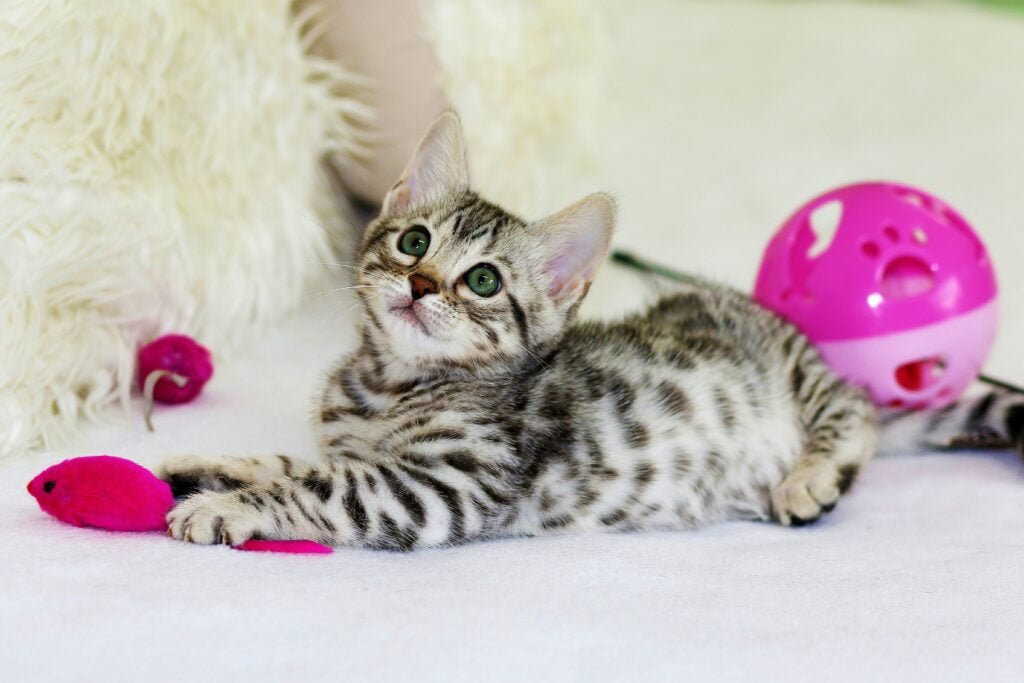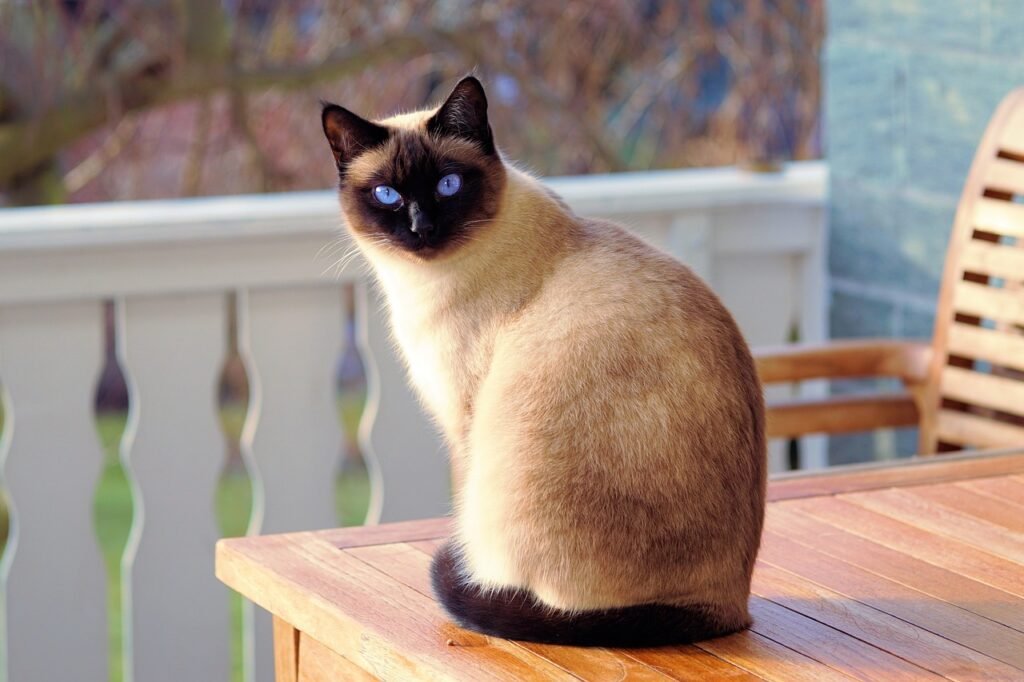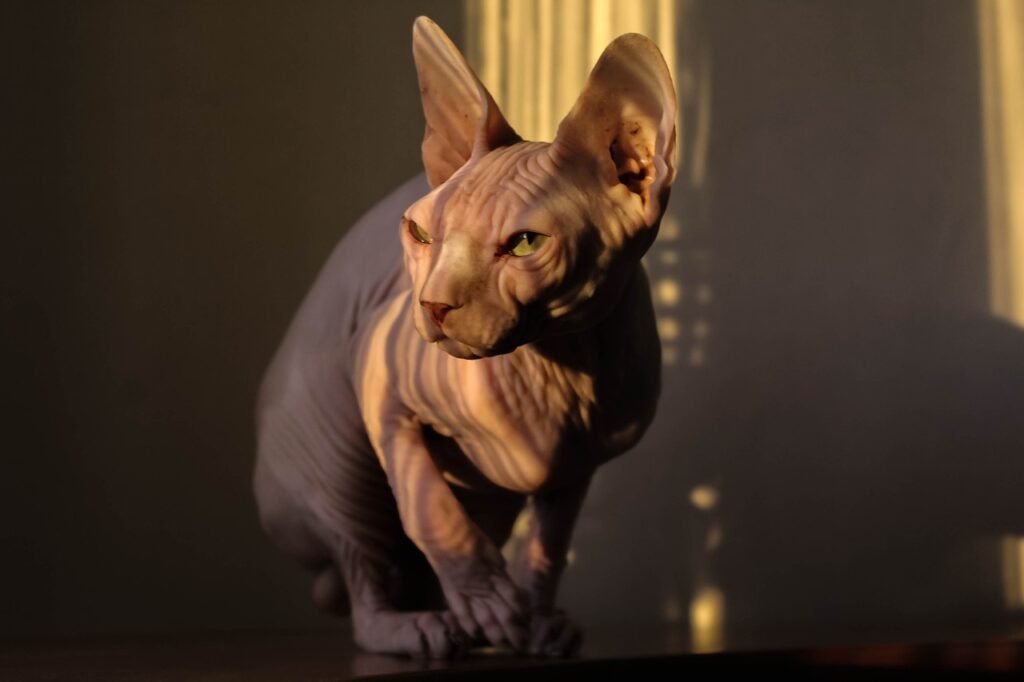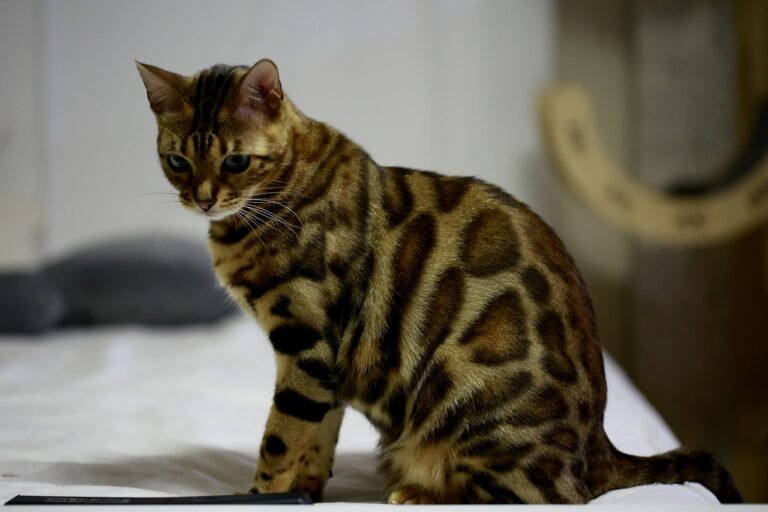
Living in an apartment doesn’t mean you have to forgo the joys of cat ownership. In fact, many cat breeds are perfectly suited to cozy urban living. However, selecting the best cat breeds for apartments is crucial to ensure both you and your furry companion thrive in harmony.
As city dwellers, we often face unique challenges when it comes to pet ownership. Limited square footage, noise considerations for neighbors, and the absence of outdoor access can all impact our choice of pet.
But fear not, fellow apartment dwellers and cat enthusiasts!
With the right knowledge and preparation, you can create a purr-fect haven for a feline friend, even in the smallest of spaces.
In this comprehensive guide, together, we’ll explore the world of the best cat breeds for apartments.
We will delve into the characteristics that make certain cats ideal for compact living. We’ll consider factors such as energy levels, vocalization tendencies, and adaptability to indoor environments. Whether you’re drawn to the quiet grace of a laid-back lounge cat or the playful antics of a more active breed, we’ve got you covered.
But choosing the best cat breeds for apartments is just the beginning. We’ll also share invaluable tips on how to create an enriching environment that keeps your apartment cat happy, healthy, and stimulated.
So, if you’re ready to welcome a furry friend into your apartment life, read on.
This guide will help you navigate the exciting world of cat breeds and empower you to make an informed decision that suits both your lifestyle and living situation. Get ready to discover your perfect apartment cat companion!
Factors to Consider When Choosing the Best Cat Breeds for Apartments

Space Requirements
When picking the best cat breeds for apartments, think about how much space they need. Some cats can handle small spaces better than others.
- Adaptability: Some breeds, like British Shorthairs and Russian Blues, do well in small spaces. They like to relax and don’t need a lot of room.
- Size of the Breed: Big cats might feel crowded in a small apartment. Smaller cats or those with a compact build fit better.
- Vertical Space: Cats love to climb. Use cat trees, shelves, or window perches to give them space to explore up high.
Activity Level
Consider how active a cat is. Active cats need more space and toys, while less active cats are better for small apartments.
- High-Energy Breeds: Breeds like Abyssinians and Siamese are very active. They need lots of playtime and things to do.
- Moderate to Low-Energy Breeds: Breeds like Ragdolls and British Shorthairs are less active and can live happily in small spaces with some toys and playtime.
- Interactive Toys: Give your cat different toys and puzzles to keep them busy.
Grooming Needs
Cats have different grooming needs. Cats that need minimal or only periodical grooming would be considered the best cat breeds for apartments.
- Long-Haired Breeds: Cats like Persians and Ragdolls have long fur that needs regular brushing to prevent tangles. This can be harder to manage in a small space.
- Short-Haired Breeds: Breeds with short fur, like Siamese and Devon Rex, are easier to groom. They need less brushing and are lower maintenance.
- Grooming Tools: Use good brushes and combs to help manage your cat’s fur and keep your apartment clean.
Personality and Temperament
A cat’s personality and temperament affect how well they adapt to apartment living. Friendly and calm cats are the best cat breeds for the apartments.
- Social and Affectionate Breeds: Cats like Siamese and Burmese are social and love being with their owners. They adapt well to apartment life.
- Independent Breeds: Breeds like Russian Blues and Scottish Folds are more independent and can be alone for longer. This is good if you’re away during the day.
- Adaptability to Change: Calm and adaptable breeds are better for apartments. Avoid breeds that get stressed easily.
Noise Level
Noise can be a big issue in apartments, especially with thin walls.
- Vocal Breeds: Some cats, like Siamese and Oriental Shorthairs, are very vocal. If you have noise-sensitive neighbors, a quieter breed might be the better choice.
- Quiet Breeds: Breeds like British Shorthairs and Russian Blues are quieter and less likely to bother neighbors.
- Noise Management: If you have a vocal cat, use heavy curtains, rugs, or noise machines to reduce noise.
Allergies
If you or your housemates have allergies, choose a hypoallergenic cat breed.
- Hypoallergenic Breeds: Breeds like Sphynx, Balinese, and Russian Blue produce fewer allergens, making them better for allergy sufferers.
- Regular Cleaning: Clean and groom your cat regularly. Vacuum often, wash bedding, and use air purifiers to reduce allergens.
- Personal Sensitivity: Spend time with a breed before adopting to see if you are allergic.
10 Best Cat Breeds for Apartments

1. Siamese
- Personality and Temperament: Siamese cats are social and affectionate. They love to interact with their owners and are very vocal.
- Space Requirements: They do well in apartments if they have enough toys and attention.
- Activity Level: High. They are playful and need mental and physical stimulation.
- Grooming Needs: Low. Their short hair requires minimal grooming.
2. British Shorthair
- Personality and Temperament: British Shorthairs are calm, easy-going, and loving. They are good companions and not disruptive.
- Space Requirements: They fit well in small spaces due to their low activity level.
- Activity Level: Low to moderate. They like to play but are not overly energetic.
- Grooming Needs: Moderate. Their dense coat needs regular brushing. Ragdoll
3. Ragdoll
- Personality and Temperament: Ragdolls are gentle, relaxed, and love to be held and cuddled.
- Space Requirements: Their laid-back nature makes them good for apartments.
- Activity Level: Low. They are not very active and like to lounge around.
- Grooming Needs: High. Their long, silky coat needs regular grooming.
4. Scottish Fold
- Personality and Temperament: Scottish Folds are friendly, quiet, and good-natured. They like being around people and other pets.
- Space Requirements: They adapt well to apartment living.
- Activity Level: Moderate. They enjoy playing but also like to rest.
- Grooming Needs: Moderate. Regular brushing is needed, especially for long-haired types.

5. Sphynx
- Personality and Temperament: Sphynx cats are affectionate, energetic, and love attention.
- Space Requirements: They are perfect for apartments as they enjoy being close to their owners.
- Activity Level: High. They are active and playful, needing lots of stimulation.
- Grooming Needs: High. Even though they are hairless, they need regular baths to remove oils from their skin.
6. Devon Rex
- Personality and Temperament: Devon Rex cats are playful, mischievous, and loving.
- Space Requirements: They do well in apartments due to their social nature.
- Activity Level: High. They are active and enjoy interactive play.
- Grooming Needs: Low. Their short, curly coat needs minimal grooming.
7. Burmese
- Personality and Temperament: Burmese cats are affectionate, loyal, and enjoy being with their owners.
- Space Requirements: They thrive in apartments where they can be close to their human companions. So, they are one of the best cat breeds for apartments.
- Activity Level: Moderate. They like to play but also enjoy lounging.
- Grooming Needs: Low. Their short coat is easy to maintain.
8. Russian Blue
- Personality and Temperament: Russian Blues are calm, independent, and a bit reserved.
- Space Requirements: They are good for apartments because of their quiet nature.
- Activity Level: Moderate. They enjoy playtime but also like to relax.
- Grooming Needs: Low. Their short, dense coat requires minimal grooming.
9. Oriental Shorthair
- Personality and Temperament: Oriental Shorthairs are social, energetic, and talkative.
- Space Requirements: They do well in apartments if they have plenty of toys and attention.
- Activity Level: High. They need lots of play and interaction.
- Grooming Needs: Low. Their short coat is easy to care for.

10. Abyssinian
- Personality and Temperament: Abyssinians are active, curious, and very intelligent.
- Space Requirements: They can live in apartments if they have enough stimulation and vertical spaces.
- Activity Level: High. They need lots of physical and mental activity.
- Grooming Needs: Low. Abyssinians have short, fine coats that require minimal grooming. Regular brushing once a week is usually enough.
How to Prepare Your Apartment for a Cat
Now you know all about the best cat breeds for apartments and made your choice. The next step is to make your apartment a great home for your new cat to help your cat feel safe, comfortable, and entertained in their new environment.

Safe and Comfortable Environment
Make sure your apartment is safe and cozy for your new cat. This means getting rid of anything that might hurt the cat and making sure that the cat has a nice place to rest and play.
Essential Supplies
You will need some basic items for your cat:
- Litter Boxes: A place for your cat to go to the bathroom.
- Scratching Posts: Cats need to scratch to keep their claws healthy.
- Toys: To keep your cat busy and happy.
- Beds: A soft place for your cat to sleep.
Cat-Proofing Your Home
Make your home safe for your cat by removing dangers and securing breakable items:
- Remove Hazards: Keep harmful items out of reach. This includes cleaning supplies, small objects they might swallow, and toxic plants.
- Secure Breakable Items: Cats like to climb and explore, so put fragile things in safe places where your cat can’t knock them over.
Creating Vertical Spaces
Cats love to climb and explore high places. You can create vertical spaces in your apartment:
- Shelves: Install shelves on the walls for your cat to climb and sit on.
- Cat Trees: Get a cat tree where your cat can climb, scratch, and perch.
Providing Entertainment and Stimulation
Keep your cat entertained and mentally stimulated to prevent boredom:
- Toys: Provide a variety of toys like balls, feathers, and stuffed animals.
- Puzzles: Use puzzle feeders to make mealtime fun and challenging.
- Interactive Playtime: Spend time playing with your cat every day to keep them active and happy. Use toys that mimic prey, like feather wands and laser pointers.
Common Challenges and Solutions for Apartment Living with Your Cat

Even if you choose a cat among the best cat breeds for apartments, there will still be challenges. Here are the most common ones and their solutions –
Managing Cat Behavior in Small Spaces
Living in a small space with a cat can be challenging, but there are ways to make it work.
- Use Positive Reinforcement: Reward your cat with treats and praise when they behave well. This helps them learn what is good behavior.
- Provide Plenty of Stimulation: Give your cat lots of toys and things to do. Play with them often to keep them busy and happy. This can prevent boredom and bad behavior.
Dealing with Noise Complaints
Cats can be noisy, and this can bother neighbors. Here’s how to handle it:
- Choose a Quieter Breed: Some cat breeds are quieter than others. Consider getting a breed known for being calm and quiet.
- Use Soundproofing Measures: You can use heavy curtains, rugs, and soundproofing materials to reduce noise. This can help keep your neighbors happy.
Handling Litter Box Odor
Litter box smell can be a problem in a small apartment. Here are some tips:
- Use High-Quality Litter: Choose a good litter that controls odor well. This step can make a big difference.
- Clean the Box Regularly: Scoop out waste daily and change the litter often. A clean litter box smells much better.
Preventing Furniture Damage
Cats love to scratch, and this can damage furniture. Here’s what you can do:
- Provide Scratching Posts and Pads: Give your cat plenty of places to scratch. Scratching posts and pads are great for this.
- Use Deterrents: To keep cats away from furniture, use deterrents like double-sided tape or special sprays. These make furniture less appealing to scratch.
Conclusion
So, what’s next?
Well, it’s time for the fun part! Head to your local shelter or cat café. Spend some time with different cats. See which one makes your heart go boom!
Whoever steals your heart, you’re now armed with all the cool tips to make your apartment a cat paradise. Now you also know which are the best cat breeds for apartments. Use this information to find your cat.
Just think – soon, you could be cuddling up with your new bestie, watching TV, or laughing at their silly antics. Your apartment’s about to get a whole lot more fun!
Remember, a happy cat means a happy you. So, pick a cat from the best cat breeds for apartments, give your new furry roomie lots of love, play, and those cardboard boxes they go crazy for. Before you know it, you’ll be living your best life with your purr-fect apartment cat!




